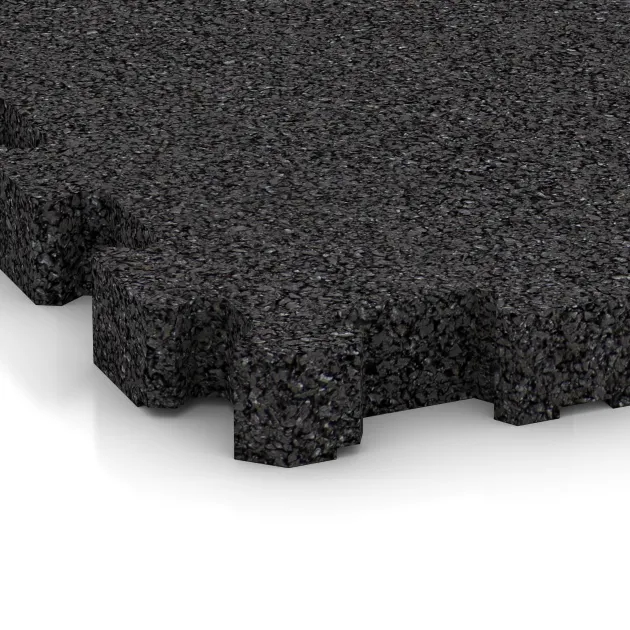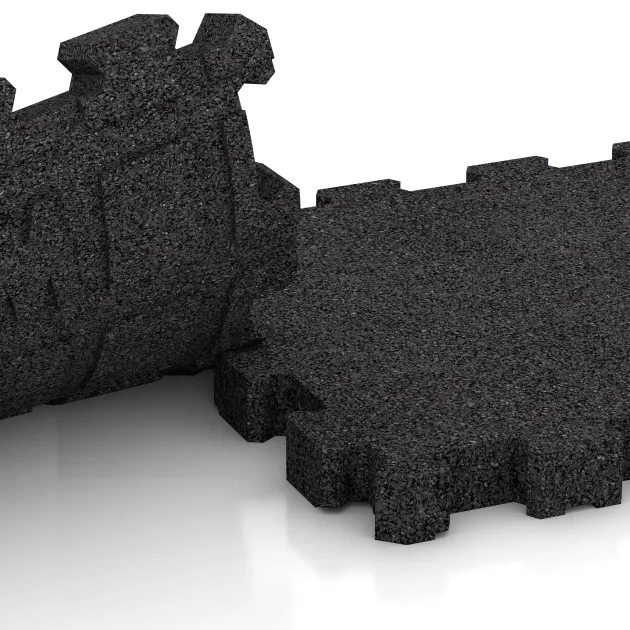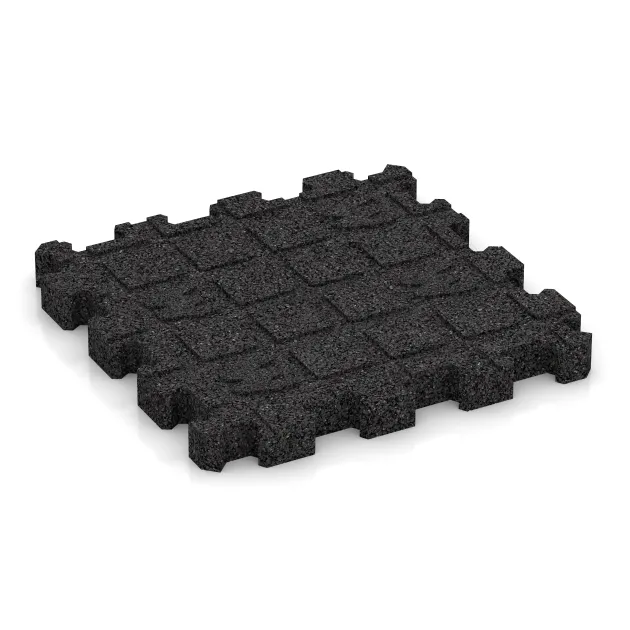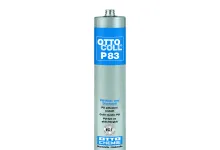Deck tile CZ "Anthracite"
- /
-
Delivery in approx.
7-14 days - €74.79 / 10.68 Piece / m²
- (2.37 kg / Piece)
EAN: 4251469352704 | Item no.: 5270
The deck tile made from polyurethane-bonded rubber granulate is an elegant and practical flooring solution for balconies, terraces and roof terraces. It offers a sleek, contemporary look combined with excellent durability and practicality. With its calibrated 30.6 × 30.6 cm format, the deck tile can be laid quickly and efficiently with minimal cutting waste – suitable for anything from compact balconies to spacious roof terraces.
Almost seamless surface
The calibrated interlocking edge without bevels creates a uniform, virtually seamless finish. During installation, the edges of the tiles lock precisely together to form a tight and stable connection. The result is a smooth, visually continuous surface that looks as though it has been poured in one piece.
Installation from the centre outwards
The tiles are installed as a floating floor – without glue or screws – on a solid, even surface. Installation typically starts with a single tile in the centre of the area. Whole tiles are then laid on each side until no full tile fits. The layout is then aligned and completed from the centre outwards. Finally, the edge pieces are adjusted; one tile usually provides two edge parts. Cutting to size is simple with a jigsaw or circular saw.
Comfort & safety
The slip-resistant surface stays grippy even when wet. The elastic structure prevents or reduces impact, rolling and scraping noises, offering a comfortable, joint-friendly walking experience. The soft, resilient material feels comfortable underfoot, even when barefoot.
Low-maintenance & quick-drying
Rainwater drains easily through the open-pore structure, leaving no puddles behind. The surface dries quickly and is ready to use again soon after rain. Fine dirt washes away naturally with rainwater, while coarse dirt can be removed with a broom, hose or pressure washer. No sealing or surface treatment is required.
Weatherproof & durable
The deck tile is frost- and weather-resistant, designed for year-round outdoor use. Compared with stone, ceramic, WPC or wood, it shows only minimal signs of ageing and retains its functionality and appearance for many years.
With its refined, almost seamless look, robust construction and low-maintenance surface, the deck tile is the ideal long-term flooring solution for stylish balconies, terraces and roof terraces.
Discount
Product Highlights
Characteristics
Product Details – Material and Structure
Comparative values
To calculate how many tiles you need for your project, simply use the online installation planner available in the shop. This free browser-based tool is directly accessible on each product page – just below the price and quantity selection. Click on “Plan installation” to open the tool instantly – no registration or download required.
Enter the dimensions of your area, such as the length and width in metres. The planner will then automatically calculate the total number of tiles required, including a realistic allowance for offcuts. You’ll also be shown a suitable layout pattern for the selected product. The tool is user-friendly, accurate and ideal for planning your material requirements with confidence.
All WARCO tiles designed for outdoor use are permanently weather-resistant and highly durable. They do not rot, decay or develop mould, and they cannot come loose from the ground, as they are installed without adhesive. Even under frost or intense sunlight, the tiles do not crack or break.
As with wood and other materials, rubber granulate tiles can undergo slight dimensional changes. Due to temperature fluctuations or temporary moisture absorption, the material may expand or contract slightly – a natural effect.
Thanks to their open-pored structure, WARCO tiles are water-permeable. Rainwater can drain evenly through the tiles into the ground, preventing puddles from forming. The water either flows through the integrated drainage structure beneath the tiles or seeps naturally into the soil. This ensures that the surface remains usable even in wet conditions and dries quickly.
WARCO tiles also feature a slip-resistant surface that provides secure footing even when wet. No additional surface treatment is required, as the tiles are low-maintenance, long-lasting and perfectly suited for continuous outdoor use.
Yes, that is the standard approach. The vast majority of our customers – whether private, municipal, or commercial – install the delivered WARCO tiles themselves or with their own staff. The installation is simple and requires no special skills. Only fitting the curb into a concrete foundation with back support demands a little extra craftsmanship. Cutting the elements to size and laying them on a suitable substrate is not challenging. You can find all essential installation information in our Expert Advice – FAQ section on our website.
WARCO offers several connection systems for floor tiles, each differing in design, installation method and visual appearance. Below is an overview of the key differences:
Puzzle joint (visible)
In this system, the tile edges feature an interlocking profile reminiscent of classic jigsaw teeth or mushroom-shaped connectors. During installation, the profiles of adjacent tiles interlock to form a continuous connection across the full tile thickness.
The joint profile may be formed directly during pressing or precisely cut after the tile has cured. Whether the joint is visible in the finished surface depends on the edge finish (e.g. with or without chamfer) and the surface colouration.
The symmetrical shape ensures uniform load transfer and makes this type of joint the most mechanically stable option.
Plug-in connectors (plastic dowels)
This system uses separate connecting elements, typically round plastic dowels, which are inserted into pre-drilled holes along the sides of the tiles. The tiles themselves have smooth, straight edges similar to precast concrete slabs.
Installation is carried out in a half-bond (stretcher bond) pattern: each tile is connected via dowels to two tiles in the row above and two in the row below. This prevents lateral shifting, although some movement along the length of the dowels remains possible. For this reason, an edge restraint must be installed around the perimeter to stabilise the entire area.
Concealed puzzle joint
This method is based on the same mechanical principle as the classic puzzle joint, but is designed to be invisible in the finished surface. The interlocking profile is located on the underside of the tile, integrated into a rebated step joint.
Two tile edges feature a positive locking profile, the other two a matching negative profile. When laid, the tiles interlock securely from below, forming a durable mechanical connection. From above, the surface appears seamless and aligned, typically with a clean, square joint pattern similar to a chessboard layout.
In rubber granulate tiles connected by plastic connectors, grass and weeds can grow in the joints because this system creates a relatively wide gap extending down to the load-bearing layer. However, by bonding the tile edges during installation, this gap can be effectively closed. In tiles with a puzzle connection or a concealed puzzle connection, weeds generally do not grow in the joints when they are properly used and maintained. The joints are either too narrow to support growth or do not extend to the load-bearing layer. To prevent unwanted growth, the tiles and joints should always be kept clean.











































